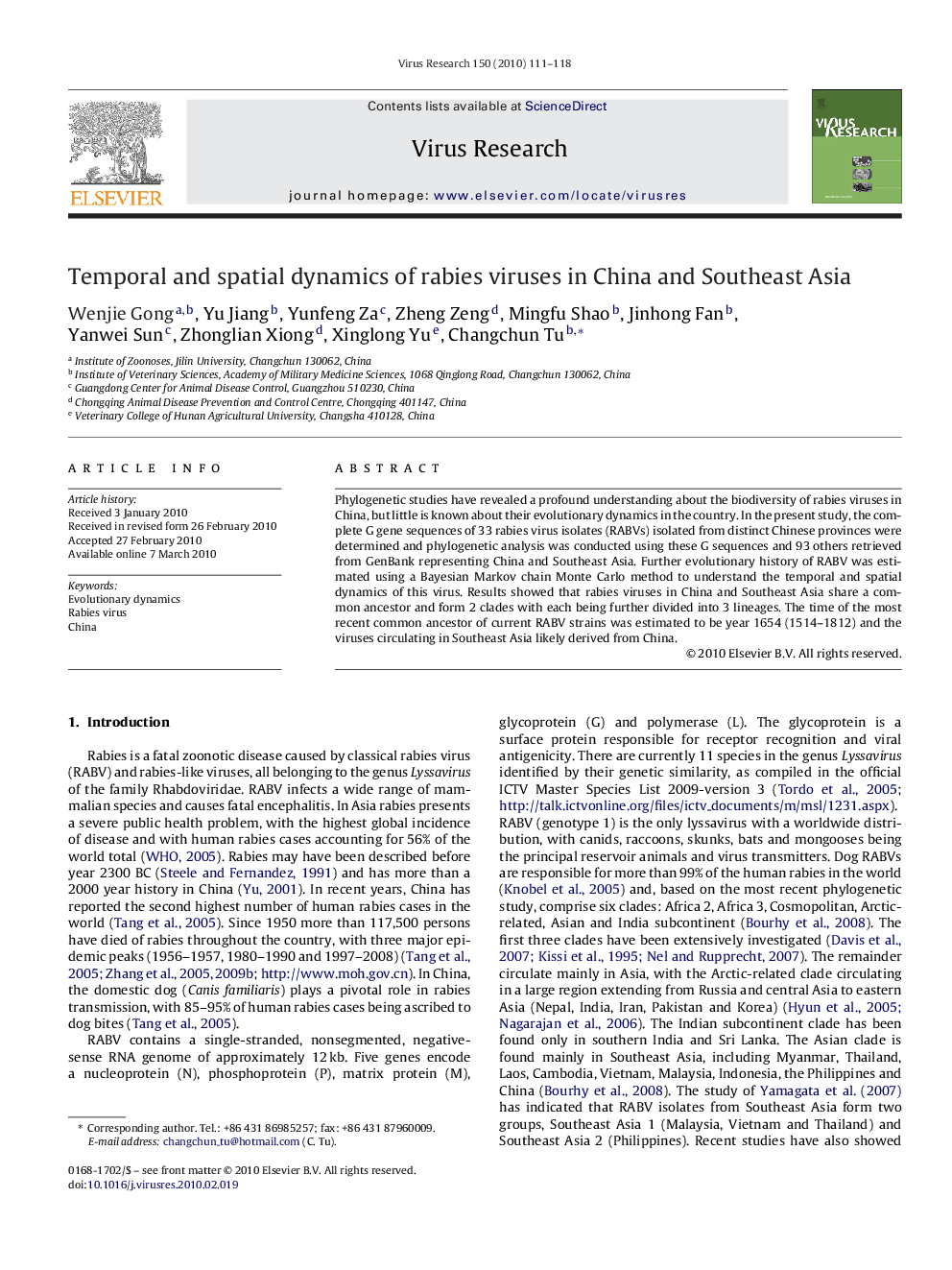| Article ID | Journal | Published Year | Pages | File Type |
|---|---|---|---|---|
| 3429294 | Virus Research | 2010 | 8 Pages |
Phylogenetic studies have revealed a profound understanding about the biodiversity of rabies viruses in China, but little is known about their evolutionary dynamics in the country. In the present study, the complete G gene sequences of 33 rabies virus isolates (RABVs) isolated from distinct Chinese provinces were determined and phylogenetic analysis was conducted using these G sequences and 93 others retrieved from GenBank representing China and Southeast Asia. Further evolutionary history of RABV was estimated using a Bayesian Markov chain Monte Carlo method to understand the temporal and spatial dynamics of this virus. Results showed that rabies viruses in China and Southeast Asia share a common ancestor and form 2 clades with each being further divided into 3 lineages. The time of the most recent common ancestor of current RABV strains was estimated to be year 1654 (1514–1812) and the viruses circulating in Southeast Asia likely derived from China.
